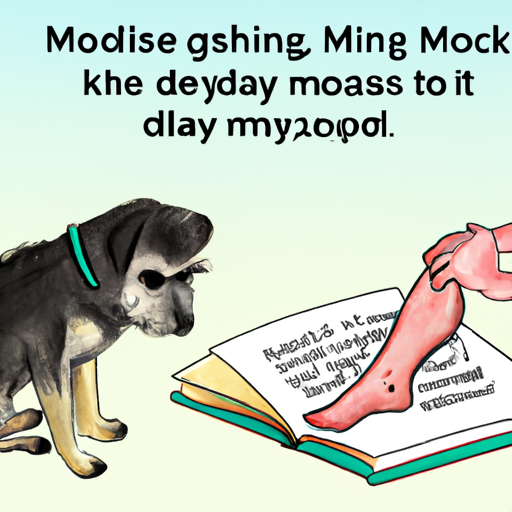Recognizing Muscle Spasms in Your Furry Friend
As a responsible and caring pet parent, it’s crucial to understand the tell-tale signs of muscle spasms in dogs. This can involve sudden, involuntary contractions in one or more of your dog’s muscles. Watch out for symptoms such as:
- Sudden yelping or signs of discomfort
- Visible muscle contractions or tremors
- Limping or difficulty moving
- Swelling or heat in a specific muscle area
If you notice any of these signs, it’s time to take action.
Understand the Causes
Understanding the root cause of muscle spasms will guide you in providing the right treatment for your furry friend. There are several potential causes including:
- Overexertion or strenuous exercise
- Dehydration or electrolyte imbalance
- Injury or trauma to the muscle
- Certain diseases such as hypothyroidism or Addison’s disease
- Certain medications or toxins
In some cases, the cause may not be immediately clear and will require a thorough veterinary examination.
Immediate Actions to Take
When you notice your dog experiencing a muscle spasm, your immediate response can make a significant difference. Here’s what you can do:
- Stay Calm: Dogs are very perceptive and can pick up on your emotions. If you’re panicked, your dog may become more stressed.
- Comfort Your Dog: Speak to your dog in a soft, soothing voice and gently pet them to provide comfort.
- Do Not Force Movement: Do not force your dog to move or walk if they are having difficulty. This could potentially cause more harm.
- Contact Your Vet: Reach out to your veterinarian and describe the symptoms. They may recommend immediate treatment or schedule an appointment for a check-up.
Long-Term Management and Prevention
For long-term management and prevention of muscle spasms in dogs, consider the following steps:
- Regular Exercise: Regular, moderate exercise can strengthen your dog’s muscles and reduce the risk of spasms.
- Adequate Hydration: Always ensure your dog has access to fresh water, especially during hot weather or after exercise.
- Balanced Diet: A diet rich in essential nutrients can support overall muscle health.
| Tips for a Balanced Diet | |
|---|---|
| High-quality protein | For muscle repair and growth |
| Essential fatty acids | For reducing inflammation |
| Minerals like calcium and potassium | For proper muscle function |
Frequently Asked Questions (FAQs)
Q: Can muscle spasms cause permanent damage?
A: Generally, occasional muscle spasms won’t cause permanent damage, but frequent or severe spasms should be evaluated by a vet.
Q: Can I use human muscle relaxants on my dog?
A: No, never administer human medication to your dog without veterinary advice. Some human medications can be toxic to dogs.
Q: How can I tell if my dog is in pain?
A: Signs of pain in dogs can include changes in behavior, decreased appetite, changes in posture, or excessive licking or chewing at a specific area.
Remember, your dog’s health and well-being is a priority. Your tender loving care, combined with a professional veterinary advice, is the best route to ensuring your four-legged friend stays healthy and happy.



